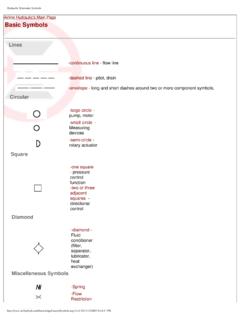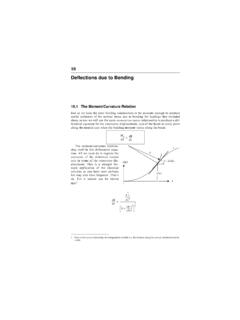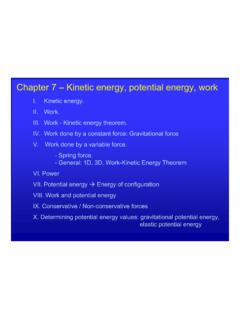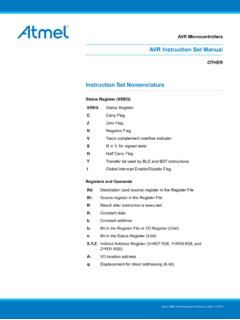Transcription of Hall vs. Variable Reluctance Sensors
1 Copyright Full Function Engineering 2012 Hall vs. Variable Reluctance Sensors Engine control computers (ECU) require an input to determine angular position of the crank and/or camshaft. This is accomplished by using a sensor which outputs a voltage as the magnetic field around it changes. The magnetic field is altered by using a toothed wheel made from a ferrous material. This is then evaluated by the ECU to determine how fast the engine is spinning (rpm) and where in the cycle the engine is. There are generally two different types of Sensors used for crank and camshaft positions: Variable Reluctance and Hall.
2 Variable Reluctance (VR) Sensors , also known as mag (magnetic) Sensors are built with a wire wound around a permanent magnet (pole) similar to a solenoid or DC motor. They do not require external power (considered passive) and have two leads, a signal and ground. Figure 1. FFE VR Sensor. As the ferrous tooth approaches the sensor, changing magnetic flux induces a current which produces a voltage. When the tooth leaves the area, the magnetic field rapidly collapses producing an opposite voltage. This cycle produces an alternating current as seen by the blue line in Figure 2. Figure 2.
3 VR Sensor Output. The ECU conditions this signal into a digital signal shown by the red line in Figure 2. This one cycle is interpreted as one tooth count. The magnitude of the voltage produced is directly proportional to how fast the magnetic field changes, therefore, the faster the engine spins the higher the peak voltage. Therein lies a potential problem. As the voltage increases, the potential for noise or interference (EMI) increases. There are three ways to combat this interference: shielding, filtering and air gap adjustment. Many trigger and sync wires come in twisted and shielded sets (balanced) to resist external interference.
4 Another easy precaution is keeping the signal wires away from high current sources (power wires and alternators). The second way is filtering. Most ECU's have a filter level adjustment which filters out interference seen as very large magnitude, short duration spikes. In an ideal system there is zero filtering present. The final step would be adjusting the air gap. This increases the distance from the ferrous material, decreasing the magnetic field therefore decreasing voltage levels. Unfortunately, the ECU has a minimum trigger voltage and may have starting issues as the engine spins slowly during cranking, especially with a small or drained battery.
5 You may now be asking yourself why not start with a digital signal? Enter Edwin Hall. Copyright Full Function Engineering 2012 In 1879 Edwin Hall devised a way to measure voltage based on electrons moving on a current carrying conductor in a magnetic field. Since most of the physics behind the Hall Effect are not important to general understanding, I'll spare the boring part and keep it simple. Now, over a century later, semiconductor advances allow engineers to design Hall Sensors with integrated circuits for additional features (below). Hall Sensors are commonly referred to as switches, as they switch on or off as the tooth approaches the sensor.
6 Ambiguously on or off because Sensors are designed to pull low from high or vice versa. The square wave output can be seen in Figure 3. Figure 3. Hall Sensor Output. The sensor has 3 wires: power, ground and signal. They are powered with low voltage ( to 24 volts) and have very little current draw (20 mA). They come in a variety of mounting styles and are made from durable plastic. Over the past few decades Hall Sensors have become more desirable in some aftermarket ECU s, which have had questionable signal conditioning or vehicles with known EMI issues.
7 Figure 4. FFE Hall Sensor External. Why choose a Hall Sensor? They work at zero engine speed which is great for slow cranking engines and traction control. Many operate up to 15,000 rpm with a 60 tooth wheel which benefits most high rpm, small displacement engines. The air gap tolerances are very large; up to 5 mm ( ), because of this re-installation can be easier. The angular displacement tolerance (how tangent the sensor is to the tooth) is liberal and has a tooth to tooth memory so they don't suffer from wheels being out of round. No moving parts provide long life expectancy; over a billion cycles.
8 All of these advantages allow for a more consistent, user friendly, higher value product.








